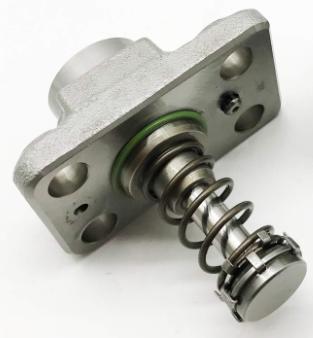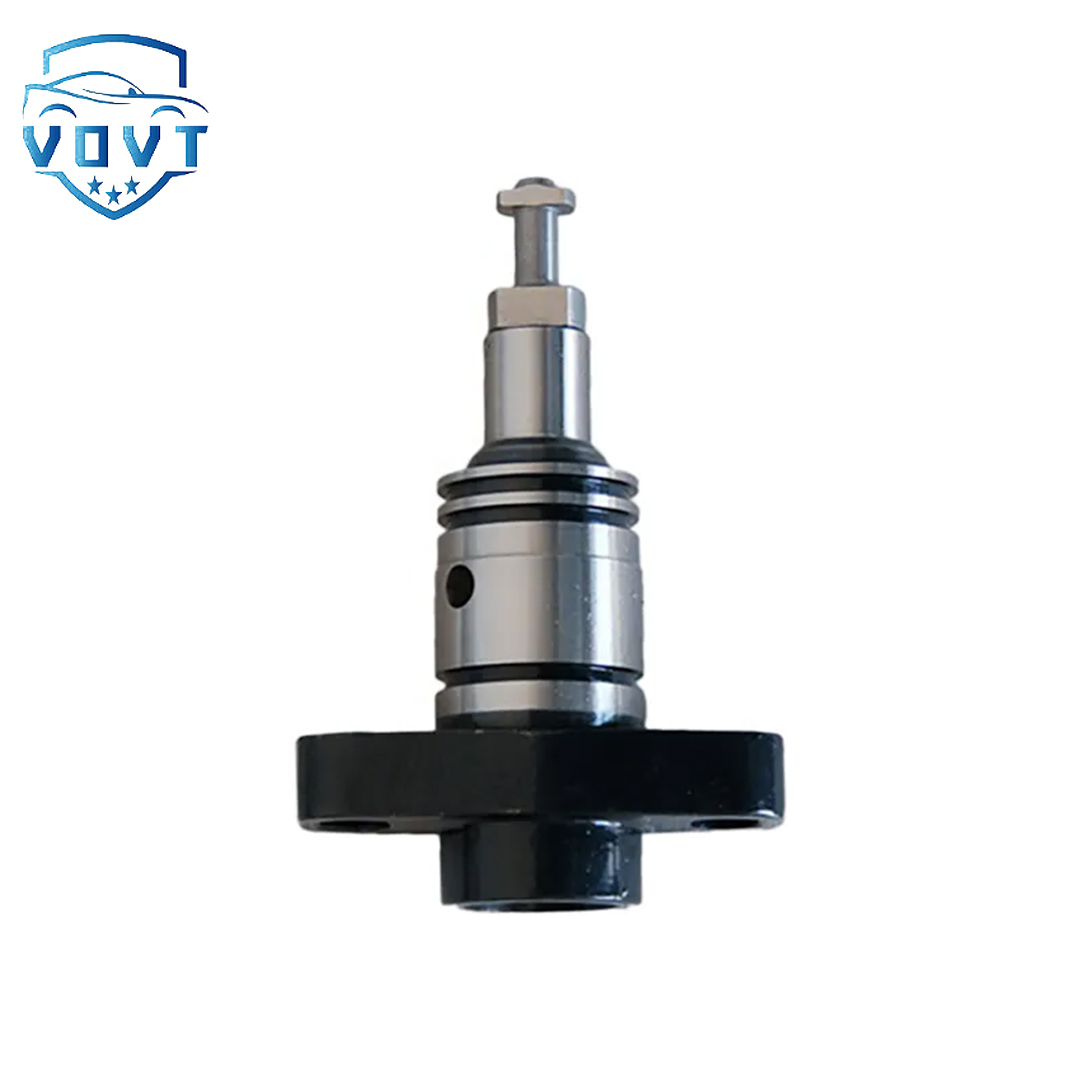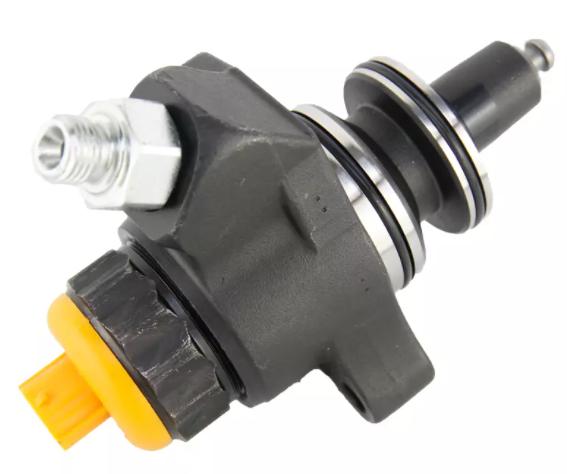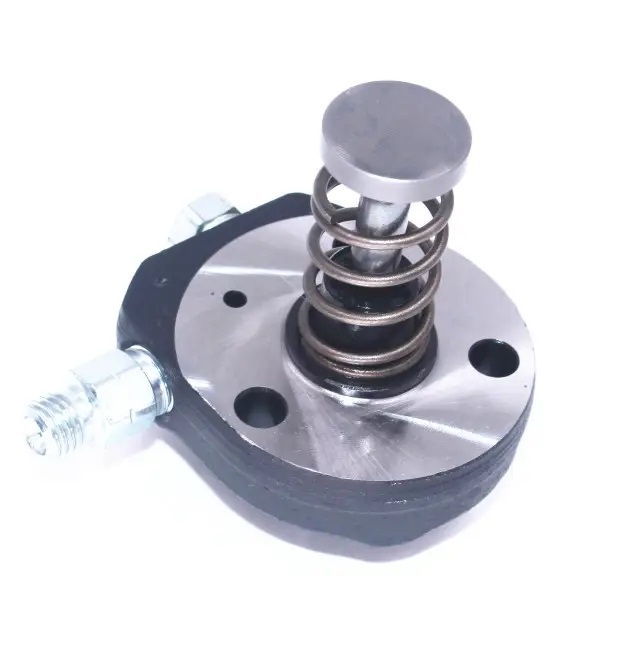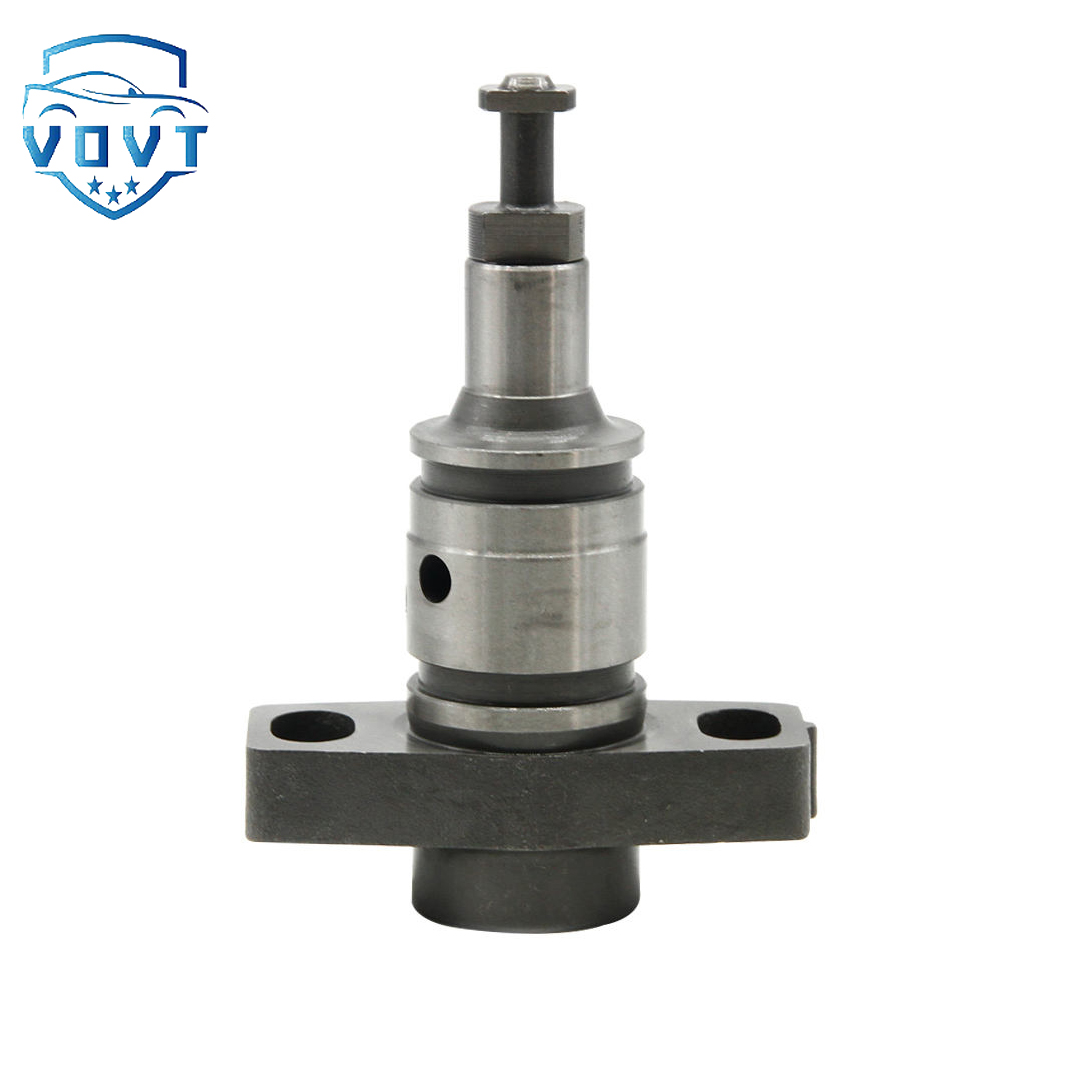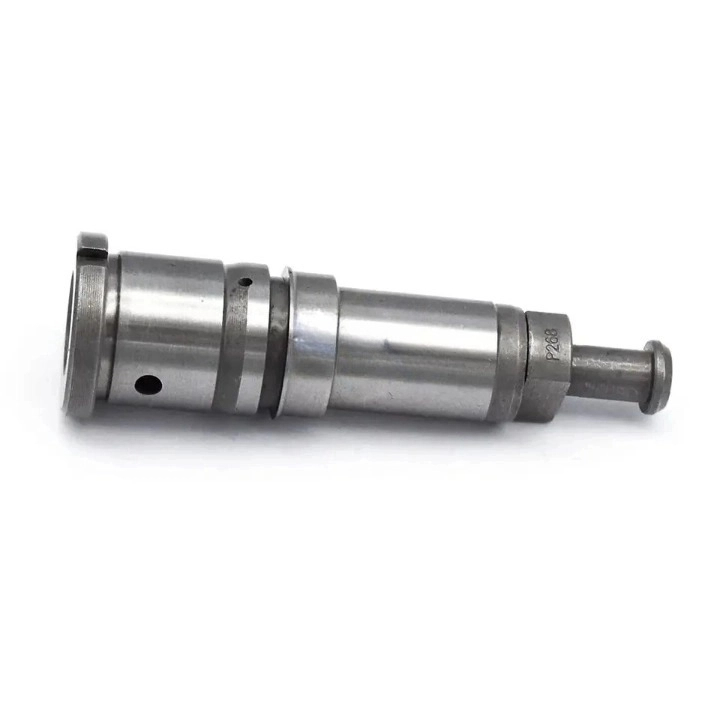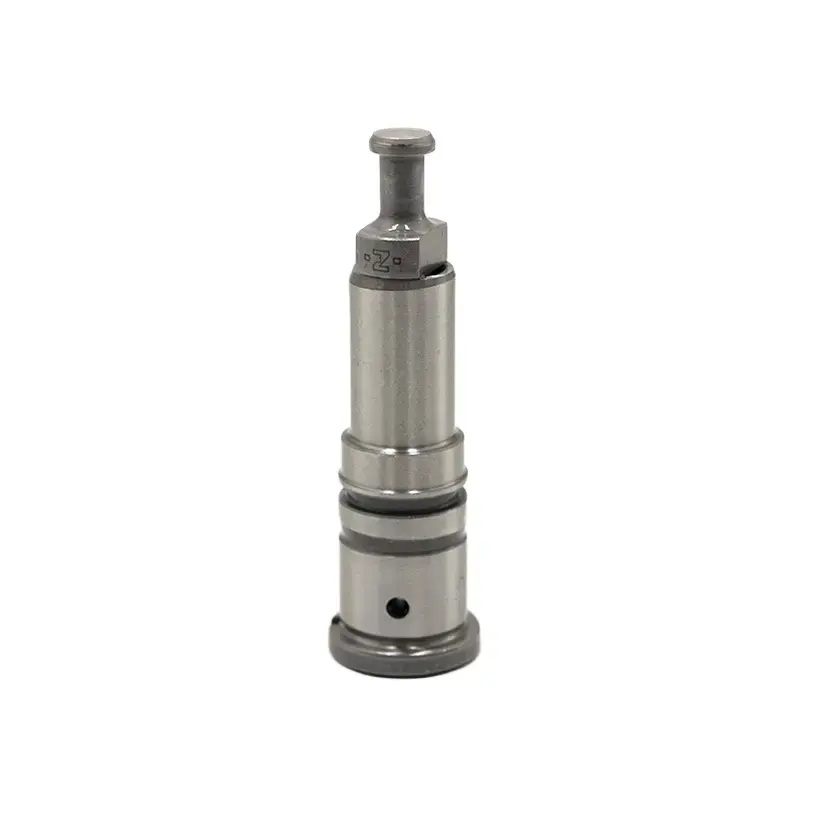Made in China Fuel Injection Pump Plunger 200F3 Pump Elements Engine Accessories
products description
| Reference. Codes | 200F3 |
| OE/OEM Codes | / |
| Application | / |
| MOQ | 5 PCS |
| Certification | ISO9001 |
| Place of Origin | China |
| Packaging | Neutral packing |
| Quality Control | 100% tested before shipment |
| Lead time | 7~15 working days |
| Payment | T/T, Paypal, Western Union or as your requirement |
The function of diesel oil pump plunger
Core function: Produce high-pressure fuel
1. Principle of plunger pumping oil
Structural basis: The plunger is installed in the plunger sleeve, and the two form a precision-matched pair (the gap is only 0.001~0.003mm). The top of the plunger forms a closed oil pressure chamber with the pump body, with an inclined groove or spiral groove on the side, and the bottom contacts the camshaft through the roller body assembly.
Oil pumping process:
Oil suction stage: The camshaft rotates, the plunger moves downward, the volume of the oil pressure chamber increases, and the fuel is sucked in through the oil inlet hole (depending on the low-pressure fuel provided by the oil pump).
Oil pressure stage: The plunger moves upward, the oil inlet hole is closed by the plunger, the volume of the oil pressure chamber decreases, and the fuel is compressed to generate high pressure (up to 100~200MPa, and the high-pressure common rail system is higher), and is sent to the injector through the oil outlet valve.
Key function: Through the reciprocating motion of the plunger, the low-pressure fuel (about 0.2~0.6MPa) provided by the oil pump is converted into high-pressure fuel, ensuring that the fuel is well atomized in the injector and fully mixed with the air for combustion.
2. The significance of high pressure to combustion
Diesel engines rely on compression ignition. High-pressure fuel injection can atomize the fuel into fine particles (particle size 10~30μm), which are quickly mixed with high-temperature and high-pressure air to ensure combustion efficiency and power output.
If the plunger pump oil pressure is insufficient, it will lead to poor atomization, incomplete combustion, engine power reduction, black smoke and other problems.
Precise control of fuel injection volume
1. Oil volume adjustment mechanism of plunger chute
The chute (or spiral groove) on the side of the plunger cooperates with the oil return hole on the plunger sleeve to control the fuel injection volume by changing the effective stroke of the plunger (i.e. the stroke length of the oil pressure stage):
Increase in oil volume: The plunger rotates, the relative position of the chute and the oil return hole changes, the oil return hole closes later when the plunger moves upward, the stroke of the oil pressure stage becomes longer, and the fuel injection volume increases.
Decrease in oil volume: The plunger rotates in the opposite direction, the oil return hole closes earlier, the stroke of the oil pressure stage is shortened, and the fuel injection volume decreases.
Adjustment method: In mechanical pumps, the plunger is driven to rotate through the governor linkage mechanism; in electronically controlled pumps (such as electronically controlled single pumps), the ECU controls the solenoid valve to adjust the plunger position.
2. Necessity of oil quantity control
Dynamically adjust the injection amount according to the engine load (such as acceleration, idling) to ensure a reasonable air-fuel ratio:
When the load increases, increase the injection amount to increase power; when the load decreases, reduce the injection amount to avoid fuel waste and excessive emissions.
If the plunger wears and causes the oil quantity control to be inaccurate, it will cause faults such as "excessive oil supply (engine overspeed)" or "too little oil supply (lack of power)".
Control the injection timing
1. The relationship between the plunger stroke and the injection time
The moment when the plunger starts to move upward to close the oil inlet hole determines the timing of the start of injection:
When the camshaft phase is fixed, the initial position of the plunger (controlled by the fuel supply advance angle adjustment mechanism) affects the start time of oil pressure, and then affects the injection time of the injector.
In mechanical pumps, the start time of the plunger upward is changed by adjusting the height of the roller assembly or the phase of the camshaft to achieve the injection advance angle adjustment; in electronically controlled pumps, the ECU is precisely controlled according to signals such as engine speed and temperature.
2. The influence of timing deviation
Injection too early: the diesel engine may experience knocking and increased combustion noise; injection too late: the fuel is not fully burned, resulting in black smoke from the exhaust pipe and increased emission of pollutants (such as NOx, HC).
Sealing and wear resistance of plunger pairs
1. Precision matching sealing effect
The high-precision matching (grinding) of the plunger and the plunger sleeve forms a sealing surface to prevent high-pressure fuel leakage:
If the seal fails (such as wear and scratches), the pressure in the oil pressure chamber drops, resulting in a reduction in the amount of fuel injection, insufficient injection pressure, and difficulty in starting the engine or a decrease in power.
The sealing performance also affects the pressure-maintaining capacity of the fuel system, avoiding fuel reflux after shutdown, which causes difficulty in starting the next time.
2. Wear-resistant materials and surface treatment
The plunger is usually made of high-hardness alloy material (such as ball bearing steel GCr15), the surface is carburized and quenched (hardness HRC60~65), and the inner wall of the plunger sleeve is hard chrome plated or nitrided to resist impurities in the fuel and high-pressure friction, extending the service life.
Typical application scenarios and failure impact
1. Role in different types of oil pumps
In-line pump (mechanical pump): The plungers are arranged in pairs, each plunger corresponds to a cylinder, and the oil is pumped separately by the camshaft drive. The oil volume and timing are controlled by the mechanical governor.
Distribution pump (VE pump): A single plunger supplies oil to each cylinder through a rotary distribution method. It has a compact structure and is commonly used in light diesel engines.
High-pressure common rail pump: The plunger group (multi-plunger) pumps fuel into the common rail pipe to establish a stable high pressure. The injection of the injector is independently controlled by the ECU. The plunger is mainly responsible for the establishment of high pressure, and the oil volume and timing are precisely adjusted by the solenoid valve.
2. Common faults and consequences
Plunger wear: Impurities in diesel (such as dust and metal chips) wash the plunger surface, causing the fit clearance to become larger, high-pressure fuel to leak, fuel injection volume to decrease, engine power to decrease, and fuel consumption to increase.
Plunger jamming: Poor fuel quality (containing water and colloid) causes impurities to deposit between the plunger and the plunger sleeve, or fuel coking at high temperature, making the plunger unable to reciprocate normally, causing fuel supply interruption or oil volume out of control (such as the risk of "runaway").
Failure of the oil volume adjustment mechanism: The plunger chute or linkage mechanism is worn, resulting in the inability to accurately adjust the fuel injection volume. The engine may have problems such as unstable idle speed and abnormal emissions.








